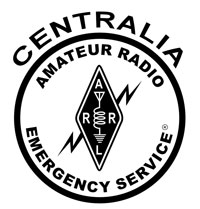 Our Centralia Amateur Radio Emergency Service team conducts field exercises about five or six times each year. It is always interesting to see where we do well and to discover those areas where more training is required. We would probably do more field exercises but each one we do seems to lead to lots of indoor training trying to perfect our skills. No exercise is 100% successful but they are never a complete failure either, and I like that.
Our Centralia Amateur Radio Emergency Service team conducts field exercises about five or six times each year. It is always interesting to see where we do well and to discover those areas where more training is required. We would probably do more field exercises but each one we do seems to lead to lots of indoor training trying to perfect our skills. No exercise is 100% successful but they are never a complete failure either, and I like that.
Our most recent field exercise, held the last weekend in December, was designed around an “almost” real disaster. On a winter Saturday morning, a two inch gas pipe ruptured. In our exercise, it also caused an explosion knocking out communications systems and the power grid. It also damaged our city Emergency Operations Center. Only two weeks before, a real gas pipe ruptured in the downtown area causing evacuations before the system was shut down. No fire or explosion but the threat was very real. This is one busy scenario. The ARES deployment notification went out, a net control was established and command & control was set up inside the main Riverside Fire Authority building. We deployed one of our two ARES comm vans as well and requested they attempt to set up HF communications with the Washington State EOC.
designed around an “almost” real disaster. On a winter Saturday morning, a two inch gas pipe ruptured. In our exercise, it also caused an explosion knocking out communications systems and the power grid. It also damaged our city Emergency Operations Center. Only two weeks before, a real gas pipe ruptured in the downtown area causing evacuations before the system was shut down. No fire or explosion but the threat was very real. This is one busy scenario. The ARES deployment notification went out, a net control was established and command & control was set up inside the main Riverside Fire Authority building. We deployed one of our two ARES comm vans as well and requested they attempt to set up HF communications with the Washington State EOC.
Over the next couple of hours, the team was asked to perform windshield surveys to determine the scope of the power and communications outages. We also began the process of setting up our church emergency evacuation shelter and one medivac helicopter landing zone near the disaster site. After about three hours, we stopped the exercise and held a short debrief.
One valuable lesson all first responders learn is to determine priorities in any major event. Find the most serious problem facing you and deal with it first. Everything else is also prioritized and manpower is assigned as available. In a major disaster, there are never enough people to go around and some assignments must be handled later if at all. This bothers first responders and volunteers. We want to help. We want to do it all.
At our next regular training date, the team received a PowerPoint presentation about setting priorities. As I looked across the room, I realized this was the first time many of our ARES volunteers had been asked to set priorities during a disaster, and I also realized I had failed to correctly train them how to set these same priorities. In the weeks to come, we will fix the problem as best we can and move on. As I said earlier, I like training exercises that show where we need improvement. We will be better prepared for the next exercise… or the next real disaster.

